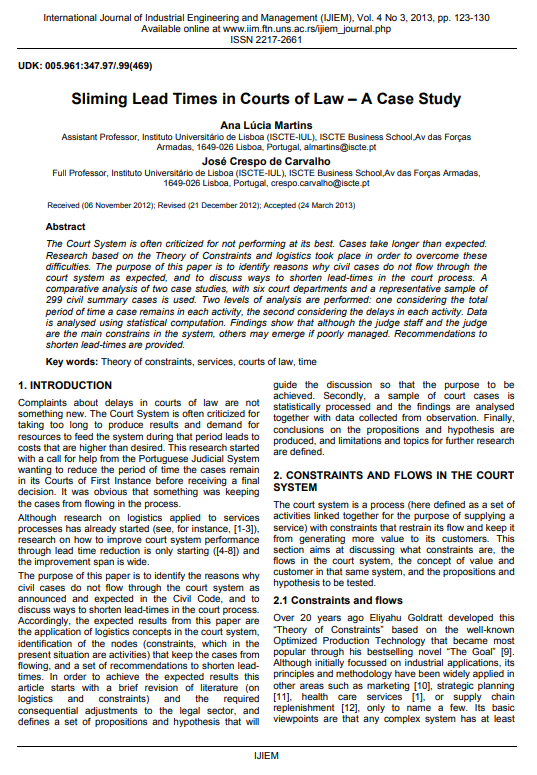
Published 2013-09-30
abstract views: 15 // FULL TEXT ARTICLE (PDF): 0
Keywords
- Theory of constraints,
- services,
- courts of law,
- time
How to Cite
Copyright (c) 2023 International Journal of Industrial Engineering and Management

This work is licensed under a Creative Commons Attribution 4.0 International License.
Abstract
The Court System is often criticized for not performing at its best. Cases take longer than expected. Research based on the Theory of Constraints and logistics took place in order to overcome these difficulties. The purpose of this paper is to identify reasons why civil cases do not flow through the court system as expected, and to discuss ways to shorten lead-times in the court process. A comparative analysis of two case studies, with six court departments and a representative sample of 299 civil summary cases is used. Two levels of analysis are performed: one considering the total period of time a case remains in each activity, the second considering the delays in each activity. Data is analysed using statistical computation. Findings show that although the judge staff and the judge are the main constrains in the system, others may emerge if poorly managed. Recommendations to shorten lead-times are provided.
Article history: Received (06 November 2012); Revised (21 December 2012); Accepted (24 March 2013)

